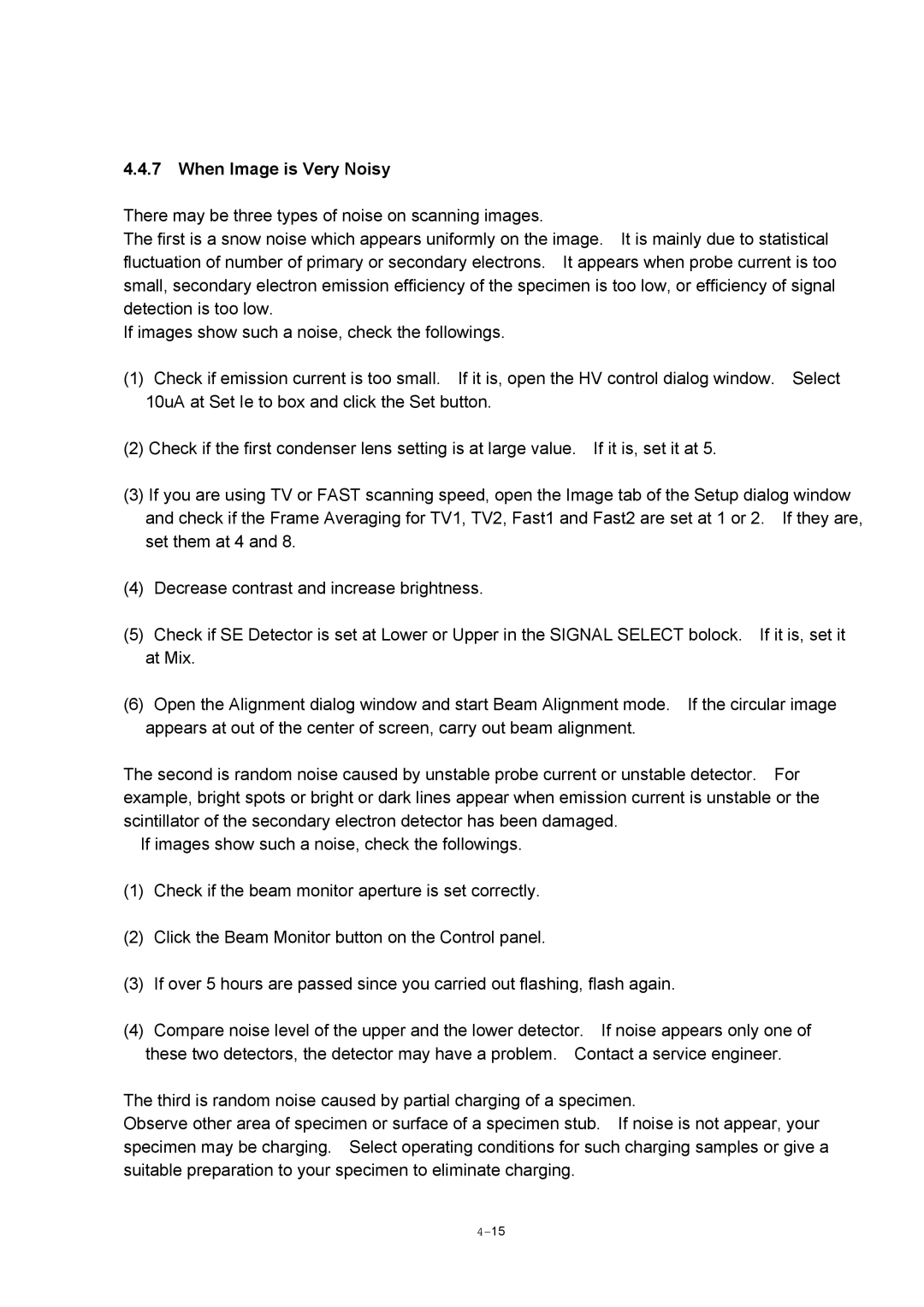4.4.7When Image is Very Noisy
There may be three types of noise on scanning images.
The first is a snow noise which appears uniformly on the image. It is mainly due to statistical fluctuation of number of primary or secondary electrons. It appears when probe current is too small, secondary electron emission efficiency of the specimen is too low, or efficiency of signal detection is too low.
If images show such a noise, check the followings.
(1)Check if emission current is too small. If it is, open the HV control dialog window. Select 10uA at Set Ie to box and click the Set button.
(2)Check if the first condenser lens setting is at large value. If it is, set it at 5.
(3)If you are using TV or FAST scanning speed, open the Image tab of the Setup dialog window and check if the Frame Averaging for TV1, TV2, Fast1 and Fast2 are set at 1 or 2. If they are, set them at 4 and 8.
(4)Decrease contrast and increase brightness.
(5)Check if SE Detector is set at Lower or Upper in the SIGNAL SELECT bolock. If it is, set it at Mix.
(6)Open the Alignment dialog window and start Beam Alignment mode. If the circular image appears at out of the center of screen, carry out beam alignment.
The second is random noise caused by unstable probe current or unstable detector. For example, bright spots or bright or dark lines appear when emission current is unstable or the scintillator of the secondary electron detector has been damaged.
If images show such a noise, check the followings.
(1)Check if the beam monitor aperture is set correctly.
(2)Click the Beam Monitor button on the Control panel.
(3)If over 5 hours are passed since you carried out flashing, flash again.
(4)Compare noise level of the upper and the lower detector. If noise appears only one of these two detectors, the detector may have a problem. Contact a service engineer.
The third is random noise caused by partial charging of a specimen.
Observe other area of specimen or surface of a specimen stub. If noise is not appear, your specimen may be charging. Select operating conditions for such charging samples or give a suitable preparation to your specimen to eliminate charging.
